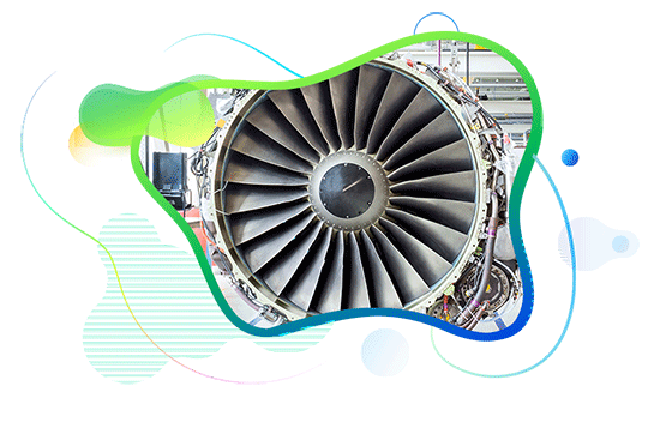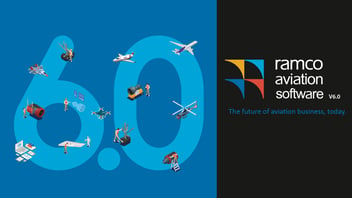
Aviation maintenance becomes more complex owing to the volatility of prices of aviation parts. Vendors keep changing the prices regularly and these are often decided based on the lead time demanded and the proprietary nature of the part. The volatile prices make the purchasing process of airlines inefficient, leading to exceptions and creating financial problems for the operator. Moreover frequent changes to the pricing make it difficult to maintain current and updated price list.
Conventional way of ordering is to either request for the quote (RFQ) from the supplier, receive the quotes and based on the quote place the order, or look for the current catalog price in the supplier portal and place the purchase order. RFQ based ordering increases the procurement TAT and can be used only when sufficient lead time is available. While the portal based query and raising PO reduces the TAT to a large extent, the challenge is the availability of the latest price for the part in the operators IT system, especially when there is no previous order for the part.
Relief comes in a way of the parts supplier publishing the entire catalog price list periodically in ATA 200 / SPEC 2000 format. ATA 200 establishes a standard Integrated Data Processing System designed to streamline supply chain transactions within the air transportation industry. This information is available in data (.txt) files hosted from the vendor or the industry association for downloads by the airline operators.
The MRO IT system of airline operators should be capable of reading this information and update the relevant Part price list of the vendor and use this seamlessly in the downstream procurement process.
Today, airlines are leveraging EDI transmission of purchase orders using SPEC 2000 capabilities of their IT MRO system. A good IT MRO system should automatically pick the current catalog price of the vendor considering the quantity price breaks and enforce minimum order quantity (MOQ) restrictions and completely avoid non-standard package quantity orders.
Ramco Aviation Suite of M&E/MRO and ERP solutions has complete support for ATA 200/SPEC2000 standards and is used by airlines across the world to automatically ingest the ATA 200 price data and utilize it during the procurement process. These customers have reaped considerable benefits in overall reduction in the order exceptions and reduced internal ordering TAT.

Contact Us for Next-Gen Aviation Maintenance Software
Enterprise asset management (EAM) involves the management of mission critical assets of an organization throughout each asset's lifecycle. EAM is used to plan, optimize, execute, and track the needed maintenance activities with the associated priorities, skills, materials, tools, and information. The aim is to optimize the quality and utilization of assets throughout their lifecycle, increase productive uptime and reduce operational costs.
Enterprise asset management (EAM) involves the management of the maintenance of physical assets of an organization throughout each asset's lifecycle. EAM is used to plan, optimize, execute, and track the needed maintenance activities with the associated priorities, skills, materials, tools, and information.
The software helps in effective maintenance of assets through preventive, predictive, shutdown and breakdown maintenance strategies. The system also helps enterprises mitigate equipment risks by enhanced safety standards. The streamlined operations and improved asset performance helps organizations increase their investment effectiveness.
EAM is important because it helps organizations track, assess, manage and optimize asset quality and reliability. Asset intensive Organizations have hundreds, thousands, even millions of assets which needs to be maintained to maximize / optimize life of these assets to increase the return on investment.
The key features of effective EAM are:
- Work management.
- Maintenance Strategies (Preventive/ Predictive / Breakdown / Shutdown).
- Planning and scheduling.
- Supply chain management.
- Health and safety.
- Mobility.
- Analytics.
- Improved Asset Health at reduced cost through data driven maintenance Programs
- Complete visibilityon entire maintenance data across Equipment, across Models, across Branches to aid in analysis & decision making such as to Repair or Replace the Equipment
- Insightful analysis of Inspection Data to improve customer satisfaction
- Effective maintenance management enhanced by predictive maintenance and inbuilt analytics
- Increased reliability and safety, keeps complete track of all the inspections & calibration schedules
- Mobile Application enables users to execute work while “in the field” leading to minimized non-productive time and increased productivity and reduces duplication of work and human errors in recording information.
- Quick turnaround time through Actionable Notification & Alerts for every process in real time and accessible anytime and anywhere.
- Improved Regulatory Part of asset management involves the implementation of better O&M practices, which can significantly improve compliance.
Asset Intensive companies under the following Industries :
- Ports
- Cement and Mining
- Utilities
- Fleet Maintenance
- Equipment Rental
- Other Manufacturing
- Real Estate & Infrastructure
- Power Generation
Contact us for a meeting and schedule a demo
This differs on case to case basis, based on the type of installation and unique industry specific requirements. Contact us for a meeting and schedule a demo.
This differs on case to case basis, based on the type of installation and unique industry specific requirements. Contact us for a meeting and schedule a demo.
Stay Connected, follow us on LinkedIn / Twitter to know more about EAM Software latest trends.

